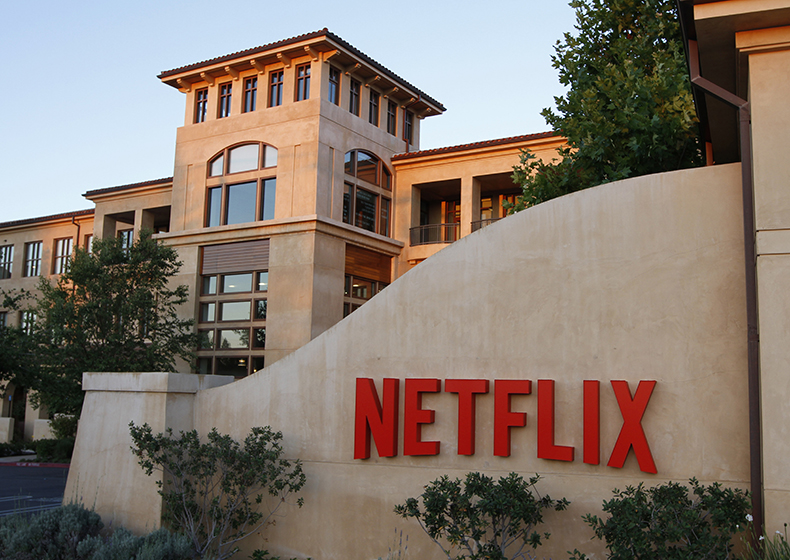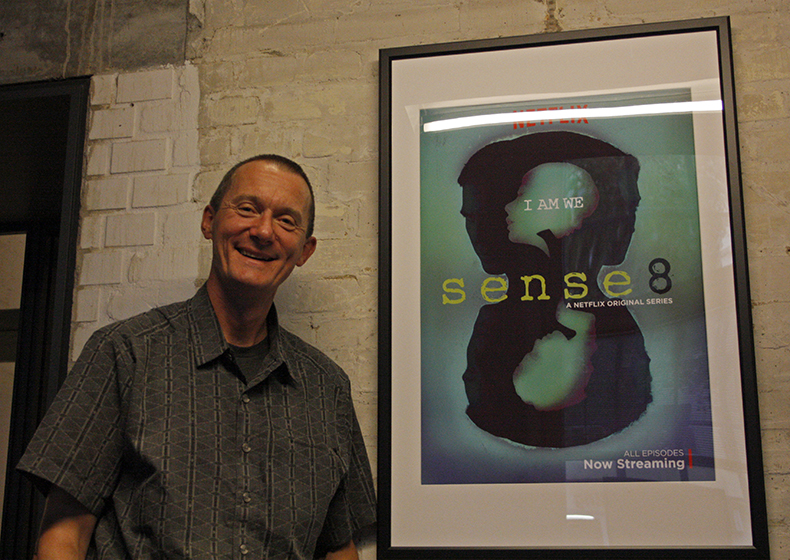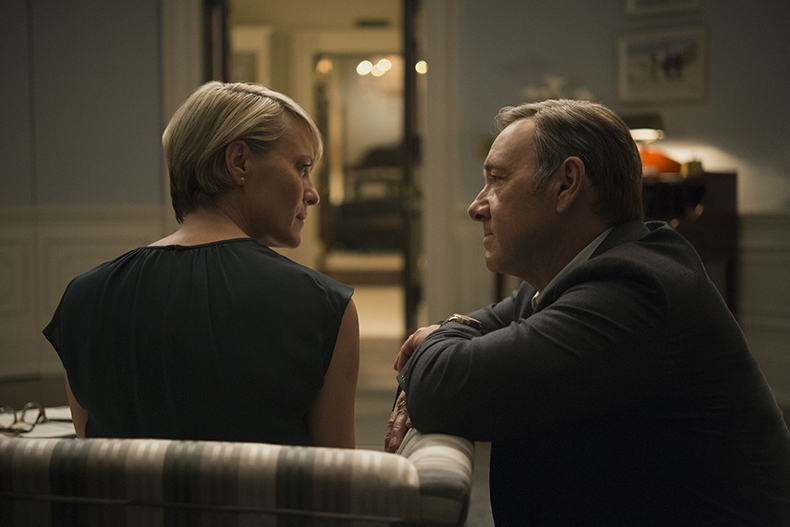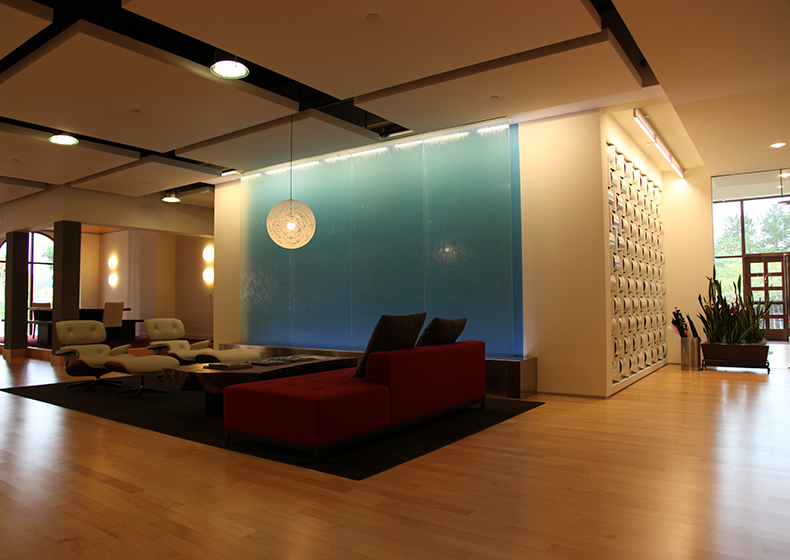What next for Netflix? We talk 4K, HDR and the future of streaming

And he has a lot to say.
We talked through the sound and picture improvements that Netflix is planning, touching on 4K, HDR, Dolby Vision, 5.1-sound and more, plus new features on the company's radar, from offline viewing to better search.
And we heard about the company's other plans, from getting Netflix on planes to customising the audio quality according to the device you're watching on.
It's a glimpse into the future of streaming, according to one of the biggest players...
What Hi-Fi?: Netflix has been rolling out 4K for about a year now. How’s that going?
Neil Hunt: It’s going well. We’ve seen a fairly large number of televisions connect to Netflix and start using 4K. It’s providing a material reason for people to upgrade to the highest tier plan, which is good news.
We’re doing most of our big new ‘originals’ in 4K. So today, even though a small minority of customers have a 4K television and a small minority of our content is available in 4K, both of those are growing.
The latest hi-fi, home cinema and tech news, reviews, buying advice and deals, direct to your inbox.
I said back at CES this year, and maybe last year, that I thought it would be a three-to-five year timeframe until half the televisions that people buy will be 4K. By then, we would expect that half the content that people is available in 4K, for people who are ready for it. Both of those predictions are probably on track.
MORE: 4K TV reviews
Netflix and 4K

WHF: What’s next for Netflix and 4K?
NH: We expect the right thing to do is to take all the programming going forwards – especially the high profile stuff – and do it in 4K. What we’ve learned is that if you try to remaster stuff that was shot two or three years ago, it’s not very effective.
The focus could be screwed up, and 4K doesn’t make any difference. You don’t notice that the name badge a guy wears, that’s illegible in HD, suddenly has the wrong name once you can make it out. Unless you’re seeing the thing as it’s captured you can make mistakes like that.
The right thing to do is to make sure we’re future-proofing our future content by shooting stuff today that will be ready for the delivery of tomorrow and next year. It’s not particularly worth going back and doing a lot of the legacy stuff. We do think 4K is one step of delivering a picture that’s more realistic.
I think that high dynamic range is another important direction. We’ve shot Marco Polo and mastered it for HDR delivery. We’ll be doing more shows going forward. Today, there’s a lack of coherent standards across televisions for delivery of HDR.
You’ve got Dolby Vision posing one standard, which a few people have adopted. There are no consumer televisions of that sort yet. You’ve got the UHD Alliance, of which we are a founding member, working on a more comprehensive standard. Then you’ve got manufacturers producing their own standards that are not necessarily compatible with anyone else, which we can’t really support.
This year you see HDR as being a bit of a prototype development environment. Next year I think you’ll see the standards converge and consolidate, and we’ll start thinking about delivering HDR in the same was we did 4K in 2014.
MORE: 2015 TV tech explained: HDR, Dolby Vision, Quantum Dot, 4K and more
HDR confusion

WHF: Will there be different versions of HDR? Isn’t there already a UHD Blu-ray with HDR?
NH: Have you seen an Ultra HD Blu-ray? I’m unconvinced there isn't actually any particular agreement there. Even if there is, how will that be rendered to a television? Because it’s not clear that all the interconnected standards are all in place. If you’ve captured wide dynamic range, you need metadata to describe how to map the range you’ve captured into a range that the TV is capable of displaying. There’s need for a protocol to exchange metadata information from the TV back to the player that’s rendering it.
That’s still seems to be somewhat undefined. It’s possible that we’ll see HDR Blu-ray players begin to hit the market with the promise of firmware upgrades for however the standards evolve in time, but it’s a little premature at this point.
I remain unconvinced that most people are about to invest in a different disc format. It seems like the time for disc formats has passed. We shall see, but I think the internet is a much better way to do that because then you can track the standards and you can keep things moving forward.
WHF: How closely do the different parties actually work together? It seems nobody is on the same page.
NH: The UHD Alliance is a place where those standards should converge, but I think it’s a loose confederation of about a dozen different partners that aren’t necessarily aligned on whether they’re trying to make a marketing logo to slap on technology, or if they’re trying to make a standard that’s truly a notch above where things are at. We shall learn and understand where that goes to.
At the end of the day when there are HDR televisions that are meaningfully better than SDR - standard dynamic range televisions - we expect to have content that will work with those devices. I just don’t see that being in the next month or two.
MORE: Ultra HD Blu-ray - everything you need to know
HDR: worth it?

WHF: Is HDR worth it?
NH: Sure it is. You look at resolution and 4K – there’s not much else you can do to get resolution that’s meaningful by adding pixels. On the other hand, when you look around, between the dark scenes and the bright lights you are seeing around 14 stops or bits of dynamic range. And yet today we’re delivering maybe 10 bits on a normal television.
The opportunity to make white clouds that still have texture, like you see when you look at the sky? When you look at the television the white clouds tend to be bleached out whiteness. Similarly when you look at a TV, the shadows behind a door, or under the cabinet, the details of the tree bark, or a face in the dark – it all tends to be a silhouette. In a natural environment, you’d be able to see detail that you can’t get on a television.
For my money, adding two or four bits of dynamic range to the pixels we deliver to the television actually makes a far more impactful impression on the user than delivering 4K instead of 2K. 2K to 4K is technically better and certainly noticeable, but it’s at the limit of what you can see. Dynamic range? We’re far from the limit of what you can see.
If you ever have the opportunity, go see one of the Dolby theatres that does Dolby Vision and delivers the full 10-12 bits of colour depth. You’ll find that’s an incredible thing.
Normal TVs, as standard, have 100-300 nits. But if you get to see a TV that will do 1000-5000 nits of brightness? When the light glints off the metal of a car or airplane wing, it’s so realistic you feel like you need to put your sunglasses on. When you see the backlit flowers, they’re actually red, they’re not bleached white. That is stunningly beautiful and I think that is going to be very compelling.
Of course, the chemistry and the technology in the display is going to be pushed to the limit; there’s a lot of work to get to that kind of brightness and that kind of contrast range. It’s a very compelling experience and we will see that happen. We will be ready to deliver on that when it comes. As you can tell I’m passionate about it. I’m kind of frustrated with where the industry has had it, but we’ll get it right.
You should see my lab upstairs. It’s 20,000ft, every cube has four or five televisions in it, all the 2016 models that have come in to have firmware developed or to be certified. When I go to the store… it’s old and boring! I always want next year’s model.
The future of sound
WHF: There have been a lot of development in video, but what of sound? Any plans for Dolby Atmos?
NH: I don’t see Atmos being a huge mover in the next year or two. Relatively few people bother with the home theatre set up. Some large percentage of people use the speakers in the television and that’s it. Delivering even 5.1 is an overkill. For those who don’t, it’s likely a bundled speaker bar that sits underneath the television pretending to be 5.1.
I’m not sure that justifies delivering Atmos too. For Atmos to be meaningful people have to invest in a receiver, a cluster of speakers in the walls and the ceiling, and some pretty sophisticated set up of the apparatus to make sure it works well – that seems to be relatively niche for the audience I’m pursuing. Doing Atmos is actually technically very straightforward – I’m just not sure it’s very compelling at this point.
What is compelling is what I call the ‘director’s intent’. I want to be able to capture the story that the director wanted to tell, and deliver it faithfully through to the audience. For me, on sound, that means the dynamic range. Often, and particularly for features, the dynamic range of sound is huge. What you see when it’s delivered to broadcast is that the range is materially compressed to make it digestible by a three-inch speaker at the back of a cheap television. That is a shame.
We’re actually going through a clean-up process at the moment of making sure we’ve got great audio masters for all of our content. We’re making sure that they’re level-normalised – today they’re not, they tend to be up and down by 3-6dB from normal.
We want to make sure that when you play any piece of content you don’t need to juggle the volume to get it comfortable. When you deliver the 5.1 to a capable receiver we want to deliver the full dynamic range that the director intended, along with the right metadata that you could choose to compress for your environment. When we deliver stereo to your tablet with tiny little drivers, we want to make sure we are not overloading it by delivering a massive dynamic range.
You could receive the appropriate audio that matchs the device you’ve got. That’s still at the experimental level at this point, but I think that could deliver a meaningful improvement in quality to people with small speakers, where we’re currently overloading them, and the full sound system, where we’re currently not delivering the full dynamic range that the director intended. Sound needs to be scalable and adaptable for what the consumer’s got.
That’s what we intend to do in the next six months. It’s a gradual thing. We know what we need to do. We just need to pass through our library and fix it gradually. New stuff coming in already, we’re getting them level properly and building the metadata. It’s not a huge material effort but it will make a difference in quality.
MORE: Dolby Atmos: What is it? How can you get it?
Netflix unfazed by competition

WHF: What about features? Amazon recently announced offline downloads.
NH: I still don’t think it’s necessarily a very compelling proposition. I think it’s something that lots of people ask for; we’ll see if it’s something that lots of people use. It adds considerable complexity to your life with Amazon Prime. You have to remember that you have to download this thing. It’s not going to be instant. You have to have the right storage on your device. You have to manage it. And I’m just not sure that people are actually that compelled to do that, that it’s worth providing that level of complexity. But we’ll watch and we’ll see.
In the mean time I think the more interesting proposition is: can we make streaming work better, in more places where people want to stream? As an example, what if we can put Netflix in a rack box? That would essentially contain all of the Netflix content you could imagine putting in an airplane server, right along with our existing content offerings. That for me is a more interesting thing; can we make Netflix work on a plane? Can we make it work on a train? Hotels? That doesn’t necessarily get you Netflix everywhere, all the time, but I think if we can make that work well, that’s a more interesting proposition than trying to change consumer behaviours around downloads.
One of the things I’ve learned is that every time you offer a choice, you paralyse some people who can’t decide if that’s what they want to do or not. That sounds really stupid and self-serving but it is in fact true. It’s the paradox of choice jam experiment. You put strawberry, apricot and blackberry jam in the supermarket aisle and you can persuade half the people coming down the aisle to taste the jam and buy one. But if you decide to add lemon, orange, blueberry and grapefruit? By adding the choices you don’t increase the number of people choosing one, but in fact you go the other way. Fewer people choose anything at all.
Every time you add a control, you add an affordance for people to do something, you reduce the number of users.
We did an experiment with our five-star rating system. Everybody said, “You’ve got to do half stars, I really want to say this is worth three-and-a-half stars. I sort of liked it quite a lot but I didn’t love it.” So we left all the graphics exactly the same and we let people choose. If you were on the left side of the star, half of it lit up. If you were on the right half, the whole thing lit up. Really simple, really straightforward. We had 11 per cent less ratings coming in! Just insane. There are plenty of cases where we’ve seen that happen.
Another complexity for Amazon is a lot of their content isn’t actually licensed for download, so only some of it is downloadable. You’ll say, “I want to watch this on the plane”, and then it won’t be available. It’s going to be really annoying and that annoyance is going to get in the way. I think Amazon are playing a good game of PR but I’m not sure it’s a good consumer experience. We’ll see. We’re watching.
MORE: Amazon Prime Instant Video review
Netflix new features

WHF: How do you decide what features to go for? How do you reconcile what people want with your own plans?
NH: Ultimately, we qualify any idea because the biggest cost is not implementation; it’s the consumer complexity. Does it work for people? Ultimately we decide to build and test a lot more stuff than we actually deploy to customers in the long term. We’ll build the thing. We will set up test cells of maybe 500,000 members and expose them to the different versions of the product. And then we’ll find out if they actually use it, how much they use it, and if it increases overall viewing.
A good example here: on laptops we offer browse by category. You can choose to browse by action, comedy, documentaries. That’s not available on the TV, and that’s not because we haven’t bothered to implement it, it’s because when we implement it we get another of these paradoxes of choice where people get bogged down in the comedy list when in fact there’s nothing there that they’re going to engage with tonight, and it’s a waste of time.
We just did another round of this test, figuring out a way to put category choice into the TV user interface. What you see is that lots of people use it, but you get less hours, more failed sessions where people choose nothing, and you get lower retention at the end of the day. There are interesting challenges there. If you get more failed sessions and less retention, you haven’t built a better product, even if you built the thing that somebody’s asked for. That’s our benchmark at the end.
Obviously there are filter stages before you get to build a tester. We do a lot of consumer insight research. We listen to people. We try to listen beyond what they say they want, to why they want it, what problem it solves, and try to get to the root causes. But about half of what we build we end up discarding because it does not improve our core metrics in the way that we want.
We just had our fifth or sixth round of trying category choice on TV, and actually there are hints that one of the versions we tried might actually be positive this time. Maybe we’ll get there but we haven’t been able to so far. It’s always been a black hole. We often come back and re-test things, and sometimes we roll with something that has hints of positivity, but not necessarily compelling stuff, because we think it’s an important direction we want to build on. We’ll do two or three attempts and still sometimes roll it back. It’s a hard thing to do, to build something and strip it out, but we think scraping the barnacles off to make things smooth and seamless has a lot of value in terms of making a model simple for people down the road.
MORE: Netflix review
Clearly, the company has plenty in the pipeline - and it's heartening to hear that Netflix cares about audio and video quality, perhaps no surprise considering it was one of the first out of the traps to deliver 4K content.
From 4K to HDR, offline downloads to audio upgrades, we're looking forward to seeing what Netflix does next...
